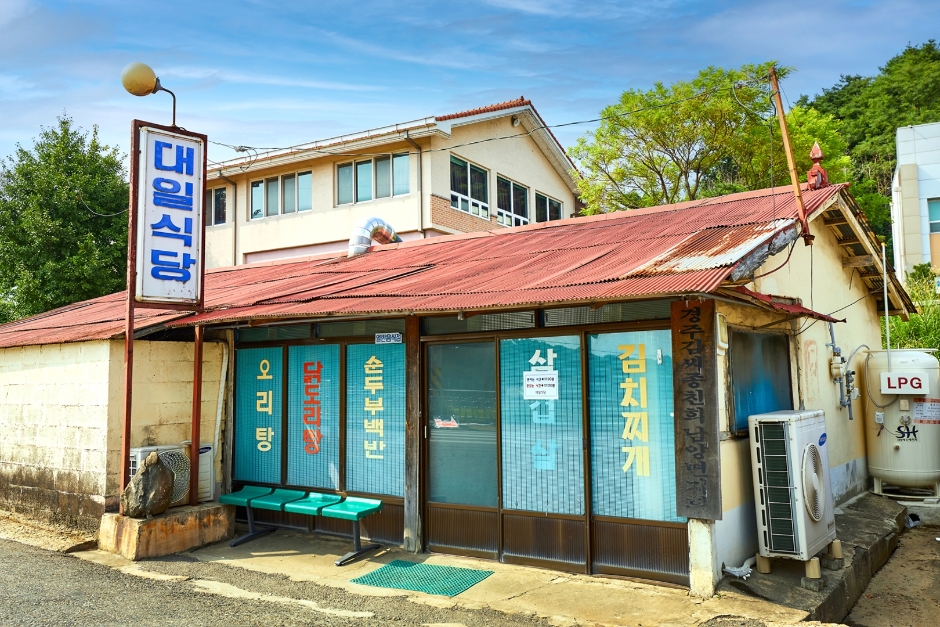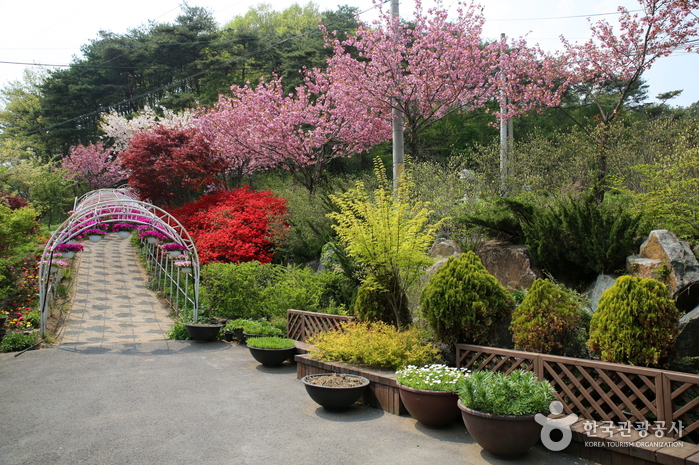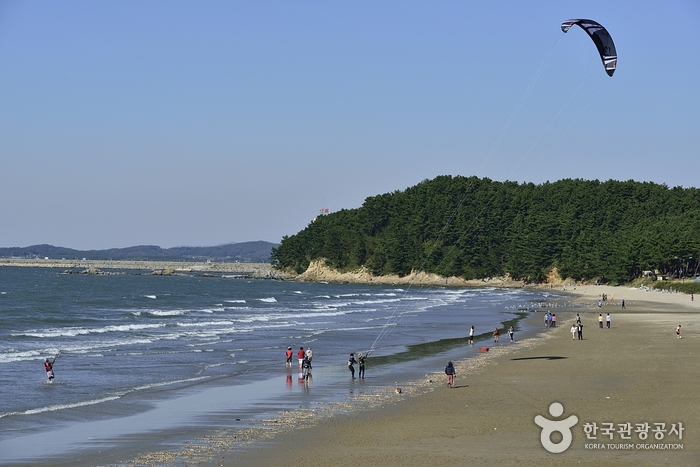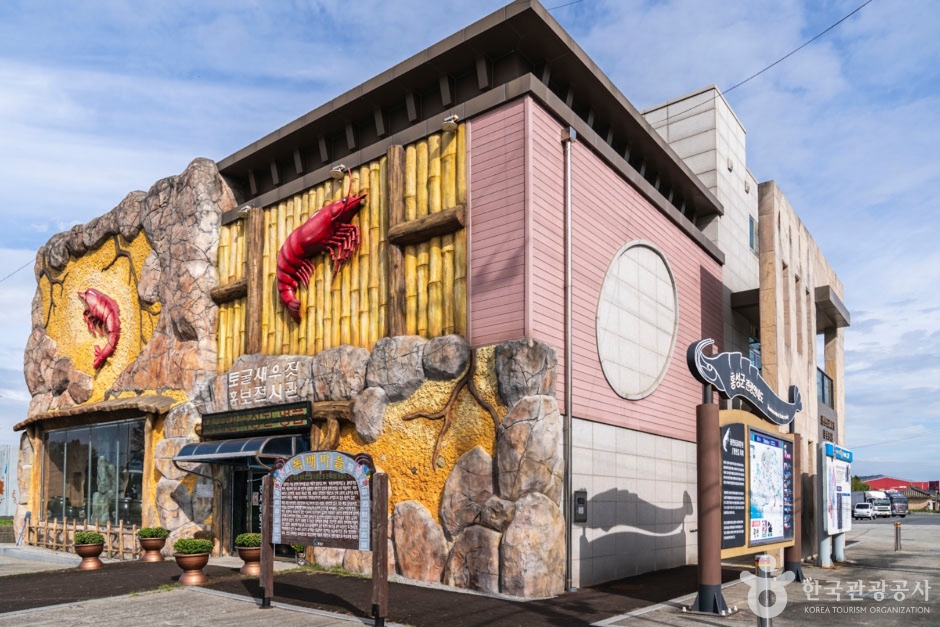Daeil Restaurant (대일식당)
16.7 Km 0 2024-03-11
334 Guyong-gil, Namyang-myeon, Cheongyang-gun, Chungcheongnam-do
This eatery is celebrated as a true local dining spot, where the ambiance brings one back to a bygone era through its interior and exterior design. It’s a baekban (set menu) restaurant that offers a hearty spread of Korean side dishes, soup (or jjigae), and rice. The menu keeps it simple with three distinct jjigae options: soft bean curd jjigae, known for its delicate texture; a robust soybean paste jjigae, simmered with savory soybean paste; and a zesty kimchi jjigae, renowned for its spicy excellence. Jjigae, a staple in Korean cuisine, pairs perfectly with rice and is a common feature at the Korean dinner table. Here, diners are invited to savor the authentic flavors of Korean home cooking. Notably, this restaurant has earned accolades for its moderately seasoned dishes that avoid overuse of spices, ensuring the flavors are palatable without being overpowering. Be mindful that during peak hours, like weekday lunchtimes, there may be a wait or the restaurant may be sold out of certain items due to popularity.
Chungcheong Suyeongseong Fortress in Boryeong (보령 충청수영성)
17.1 Km 28813 2024-02-21
Chungcheongsuyeong-ro, Ocheon-myeon, Boryeong-si, Chungcheongnam-do
Chungcheong Suyeongseong Fortress in Boryeong is a stone fortress built by the Joseon dynasty (1392-1897) in the 16th century to defend against invasions through the Hwanghae Sea. It offers a picturesque view of the Hwanghae Sea and several islands. The entrance to the fortress, called Manghwamun Gate, showcases stone artistry with its polished granite arch. This site also has historical significance as a place where Catholic persecution occurred in the 19th century.
Ocheon Port (오천항)
17.2 Km 39628 2024-02-21
Soseong-ri, Ocheon-myeon, Boryeong-si, Chungcheongnam-do
Ocheon Port is located in the northern part of Boryeong-si, where the Hwanghae Sea and Gwangcheoncheon Stream meet. It was once an important regional administrative center during the Joseon dynasty (1392-1897). Today, the port still retains its function, and visitors can explore and purchase various seafood caught in the Hwanghae Sea at the market. Ocheon Port Ferry Terminal operates ferry services to nearby islands such as Woldo Island and Yukdo Island.
Hongseong Jeongamsa Temple (정암사 (홍성))
18.0 Km 8355 2021-03-12
652, Oseo-gil, Hongseong-gun, Chungcheongnam-do
+82-41-641-0488
Jeongamsa Temple is a small rural temple situated halfway up Oseosan Mountain. There are few existing records that mention the temple’s beginning. Some suggest that it was built around AD 527 during the 5th year of Baekje King Seongwang’s reign, but there is little evidence to support this theory. The only reference alluding to a specific time is Yeojidoseo ("Detailed Survey of Korean Geography" published during the late Joseon dynasty). It states Jeongamsa Temple's location as on Oseosan Mountain, and Oseosan Mountain being surrounded by Hongsan Mountain and Baegwolsan Mountain and intersected by Hongju, Gyeolseong, and Boryeong. This indicates the temple was recognized in the mid-18th century and around the same time, Garamgo (a book about temples, published in the late 18th century) also states that Jeongamsa Temple is located approximately 11 kilometers to the east of Gyeolseonghyeon. It is still uncertain whether the temple referred to is Jeongamsa Temple on Oseosan Mountain.
Some foundation stones within the temple site measure 70-80 centimeters on each side. These stones indicate that the old Buddhist shrine of Jeongamsa Temple was laid out with five kan (Korean unit of measurement indicating the space between two pilars) at the front and three kan on the side. Future archaeological studies will help identify the true history of Jeongamsa Temple.
Kohwun Garden (고운식물원)
18.2 Km 26819 2020-08-28
398-23, Singmurwon-gil, Cheongyang-gun, Chungcheongnam-do
+82-41-943-6245
Kohwun Garden opened on April 28, 2003, following the collection, planting, and cultivation of a wide range of plants and trees over a twelve-year period. The garden is about 200,000 ㎡, and the half of the area is used for educational purposes for both professionals and non-professionals alike. It is home to at least 15 rare or endangered plant species including Miseonnamu (Abeliophyllum distichum Nakai) and Euryale ferox Salisbury, in addition to nearly 4,500 species of plant genetic resources.
Chunjangdae Beach (춘장대해수욕장)
18.6 Km 42846 2022-08-03
20, Chunjangdae-gil, Seocheon-gun, Chungcheongnam-do
+82-41-951-9110
Chunjangdae Beach offers a gentle 1.5-degree slope and a thick grove of pine and acacia trees, making it popular as a summer vacation destination. A meeting plaza is located at the midpoint of the beach, and walking paths connect to nearby islands. At low tide, visitors can catch shellfish and flatfish in the mudflat. Nearby attractions include the Busa Sea Wall, Hongwonhang Port, and Camellia Grove in Maryang-ri.
Gwangcheon Cave Salted Shrimp Complex (광천토굴새우젓단지)
19.5 Km 4623 2024-02-26
119, Gwangcheon-ro, Gwangcheon-eup, Hongseong-gun, Chungcheongnam-do
Gwangcheon Cave Salted Shrimp Complex is a collection of shops offering saeujeot (salted shrimp), a specialty of Gwangcheon. Gwangcheon’s proximity to the Yellow Sea makes it a famous place for jeotgal (salted seafood), particularly those made with shrimp. Gwangcheon’s saeujeot (salted shrimp) is stored and aged in a former mine cave tunnel, so it has great quality. There is even an exhibition hall dedicated to Gwangcheon cave salted shrimp. The Gwangcheon Cave Salted Shrimp & Dried Laver Festival is held in October.





 English
English
 한국어
한국어 日本語
日本語 中文(简体)
中文(简体) Deutsch
Deutsch Français
Français Español
Español Русский
Русский